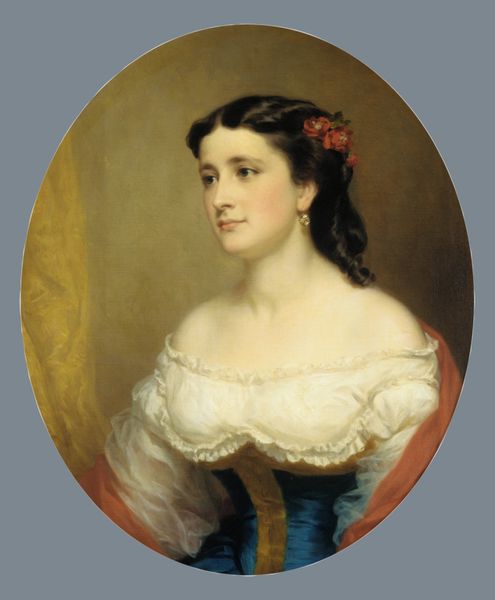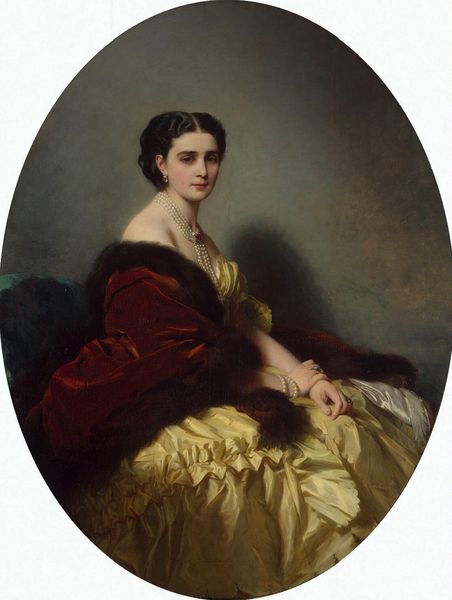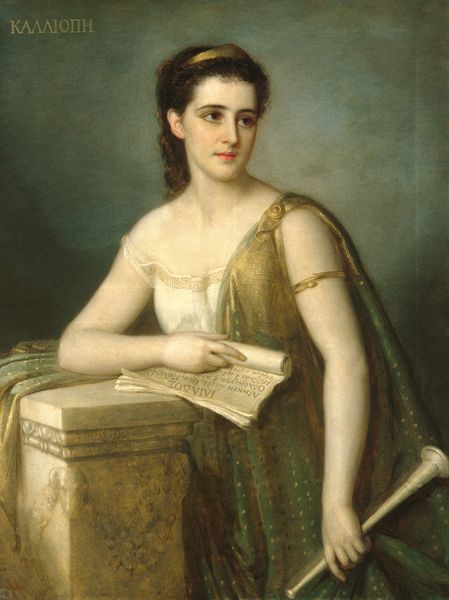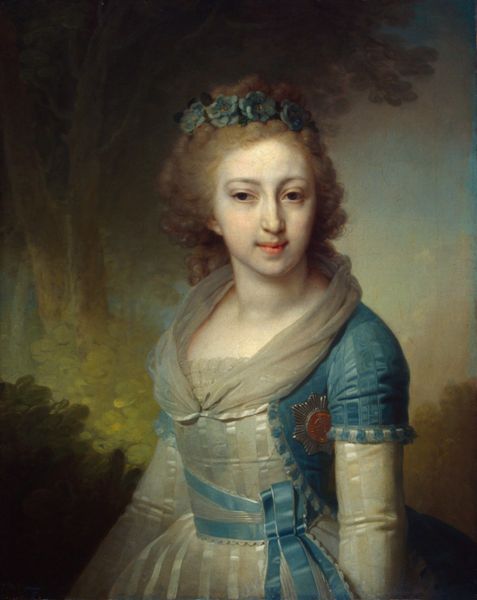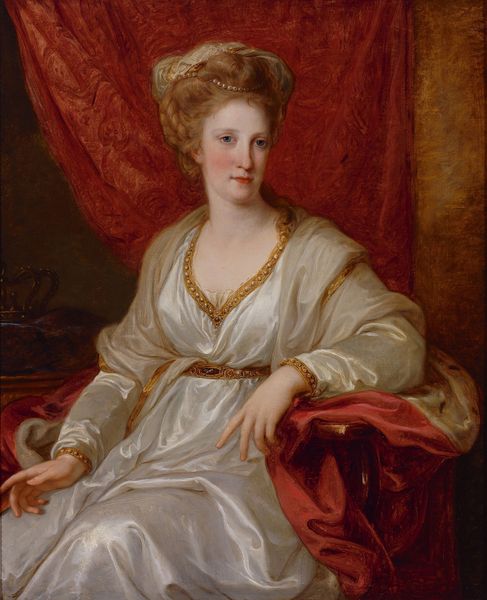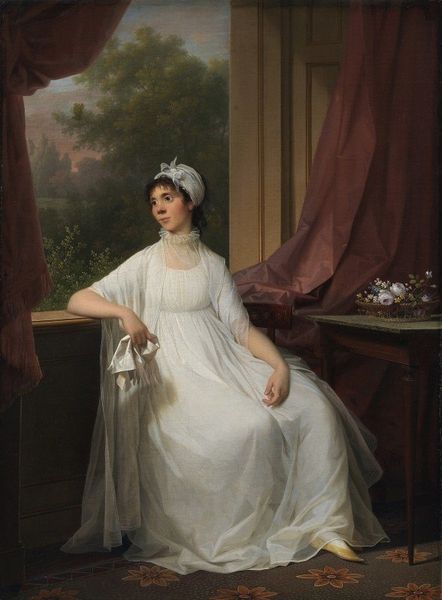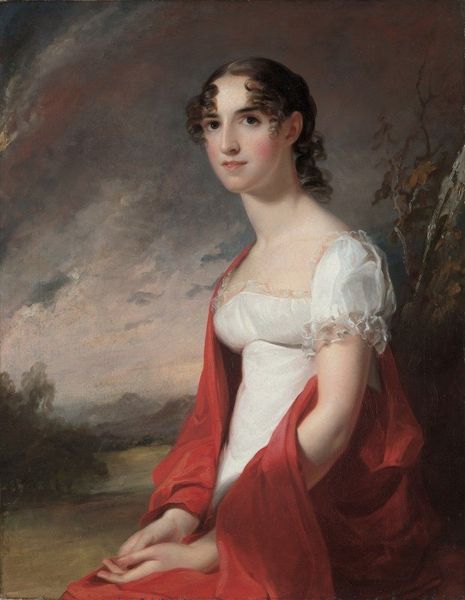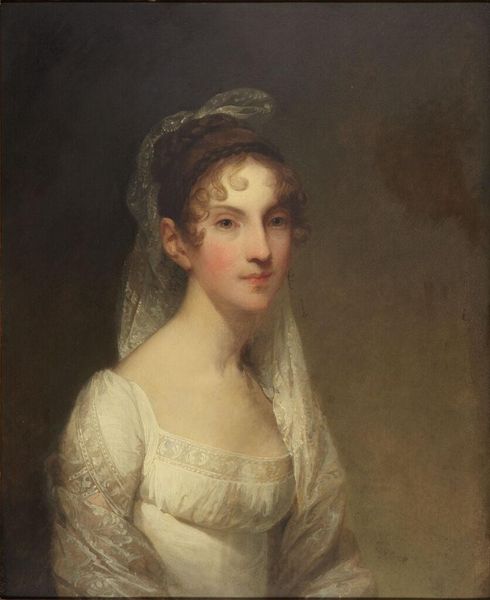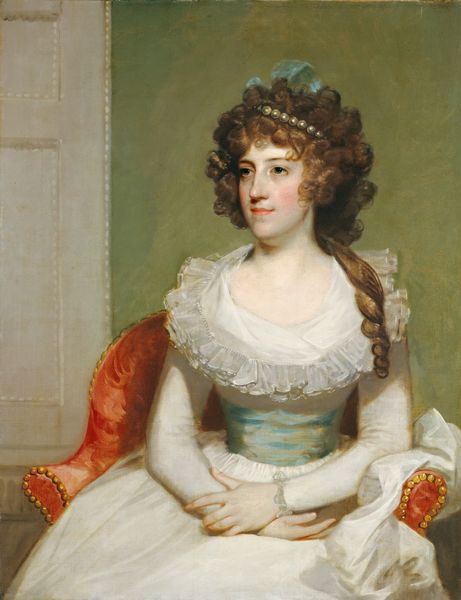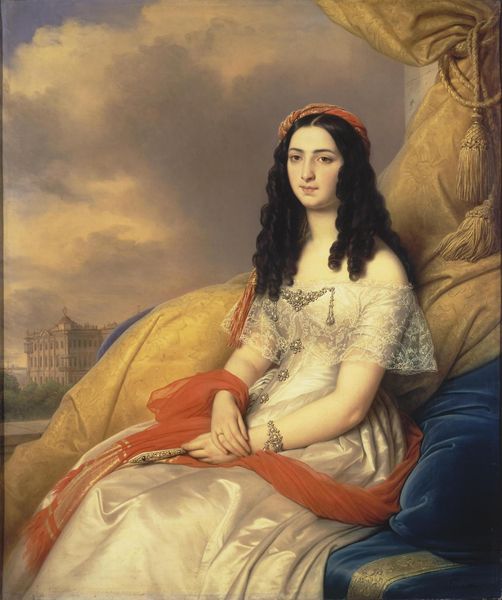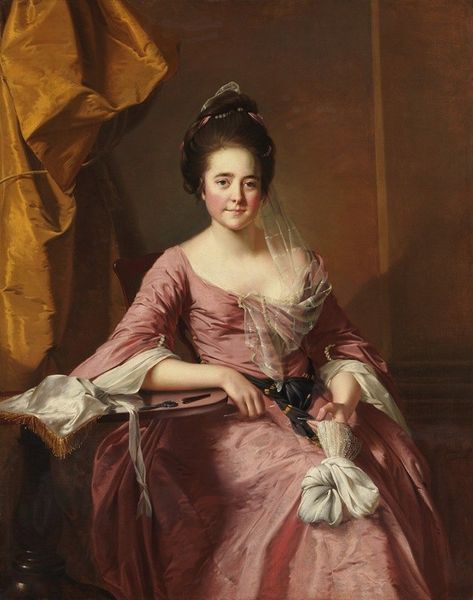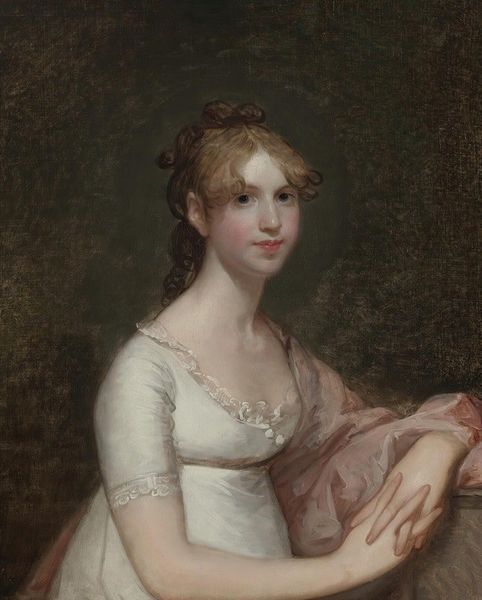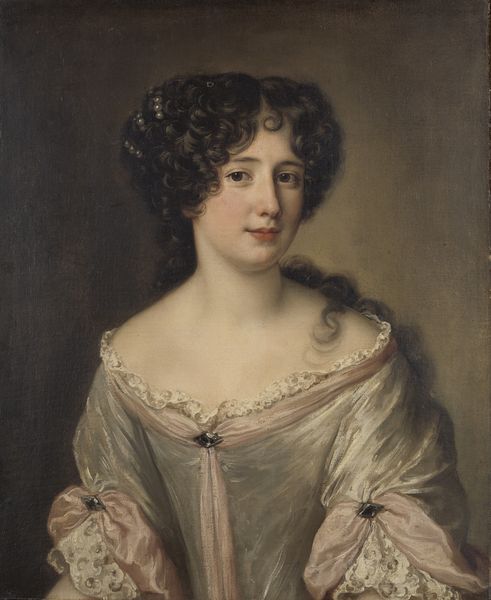
Dimensions: 43 1/2 x 33 1/2 in. (110.5 x 83.8 cm)
Copyright: Public Domain
Curator: What strikes me most immediately is the serenity of this figure. It exudes a thoughtful stillness. Editor: Indeed. This is Joseph Fagnani’s "Polyhymnia," painted in 1869. The medium, of course, is oil on canvas. Here, we see an allegorical portrait rendered with meticulous detail. Curator: The lyre is so prominently displayed. One immediately connects it to ideas of music and lyricism. Is it not Polyhymnia’s most important attribute? Editor: Absolutely. As the Muse of sacred poetry, hymn, and eloquence, her symbols are a scroll, representative of literature, and the lyre you mentioned. What I find truly intriguing is how Fagnani positions the muse. Her gaze directs us toward something unseen, perhaps internal. The soft, cool palette enhances this sense of reverie and the ethereal. Curator: From a formal perspective, the use of chiaroscuro is masterful here. Observe the way light falls across her face and the draping of her tunic—notice the contrast with the darker background which sculpts her figure. The composition relies on classical triangular arrangement and establishes balance between the various elements and provides compositional stability. Editor: Precisely. And even the seemingly simple color choices carry weight. White often represents purity and knowledge, perfectly aligned with Polyhymnia's role, a keeper of sacred traditions. It all evokes a sense of classical idealism, something the academic painters strived to convey. Curator: Indeed. In Fagnani’s painting, we find a wonderful convergence of form and symbolism. Editor: An artful expression of divine inspiration. Curator: This careful composition lends the artwork a profound and thoughtful atmosphere. Editor: Leaving us to contemplate our own connection with art and poetry.
Comments
No comments
Be the first to comment and join the conversation on the ultimate creative platform.
